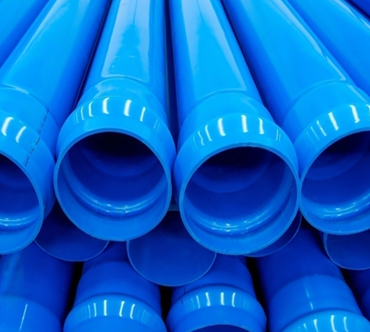
High-Density Polyethylene (HDPE) pipes are widely recognized for their durability, versatility, and efficiency in a range of applications, from water and wastewater systems to gas distribution and industrial uses. Due to their resilience, ease of installation, and long-lasting performance, HDPE Welding Machine have become a preferred choice in modern infrastructure projects. Here’s everything you need to know about HDPE pipe installation and maintenance.
What is HDPE?
HDPE is a thermoplastic polymer made from petroleum. It is known for its high strength-to-density ratio, which makes it resistant to wear, tear, and corrosion. This makes HDPE pipes ideal for use in environments where traditional pipes, such as metal or concrete, might degrade over time. Common uses of HDPE pipes include municipal water and sewage systems, agricultural irrigation, and even oil and gas transportation.
Benefits of HDPE Pipes
-
Durability: HDPE pipes are resistant to corrosion, abrasion, and chemicals, which gives them a long lifespan (up to 100 years or more with proper maintenance).
-
Flexibility: HDPE pipes can bend around obstacles and withstand shifts in the ground, making them ideal for difficult terrains.
-
Lightweight: Compared to traditional metal pipes, HDPE pipes are much lighter, which reduces transportation and installation costs.
-
Leak Prevention: HDPE pipes can be fused together using heat, creating a jointless system that greatly reduces the risk of leaks.
-
Cost-Effective: Although HDPE pipes might have a higher initial cost compared to some alternatives, their long lifespan, low maintenance requirements, and reduced need for repairs make them more cost-effective in the long run.
HDPE Pipe Installation
The installation process for HDPE pipes can vary depending on the project requirements, but there are general steps that apply to most installations.
-
Planning and Design: Before installation, a detailed plan should be created that includes the pipe size, layout, and location of joints. Factors like water pressure, environmental conditions, and future maintenance needs should all be considered.
-
Trenching: A trench must be dug to accommodate the pipes. The trench depth should be determined based on the pipe’s size and the local climate. For example, in regions that experience freezing temperatures, the pipes should be installed below the frost line.
-
Cutting and Preparing the Pipe: HDPE pipes are delivered in coils or straight lengths. The pipe needs to be cut to the required length using a pipe cutter. The ends of the pipes should be clean and free from debris to ensure a proper connection.
-
Fusing the Pipes: HDPE pipes can be joined using butt fusion or electrofusion methods. Butt fusion involves heating the ends of the pipes and then pressing them together until the plastic fuses into a single seamless connection. Electrofusion involves the use of special fittings with built-in heating elements to create the fusion.
-
Backfilling: Once the pipes are in place, the trench is backfilled with soil. Care should be taken to avoid sharp rocks or debris that could damage the pipe.
-
Pressure Testing: After installation, a pressure test is typically conducted to ensure that the system is sealed properly and there are no leaks.
HDPE Pipe Maintenance
One of the key advantages of HDPE pipes is their minimal maintenance requirements. However, to maximize their lifespan and efficiency, a few basic maintenance practices should be followed.
-
Regular Inspections: Periodic inspections are essential to check for any signs of damage or wear. Inspect areas where pipes are exposed to the elements, such as at joints, and ensure there are no visible cracks or leaks.
-
Cleaning: For water systems, it's important to ensure that pipes remain free from any obstructions or build-up. Flushing the system periodically can help prevent blockages and maintain water flow.
-
Repairing Leaks: If a leak is detected, it’s important to repair it as soon as possible. HDPE pipes can be repaired using the same fusion techniques used for installation. Small cracks may also be sealed with specialized adhesive or mechanical fittings.
-
Protecting Against UV Degradation: While HDPE pipes are resistant to many environmental stresses, prolonged exposure to UV rays can weaken the material. In outdoor applications, HDPE pipes should be protected using UV-resistant coatings or by burying them to shield them from direct sunlight.
Conclusion
HDPE pipes offer a robust, cost-effective solution for a variety of infrastructure needs. Their installation is straightforward, and their maintenance is minimal compared to traditional materials. By following proper installation techniques and conducting regular maintenance, you can ensure that your HDPE piping system will provide reliable, long-term service.
